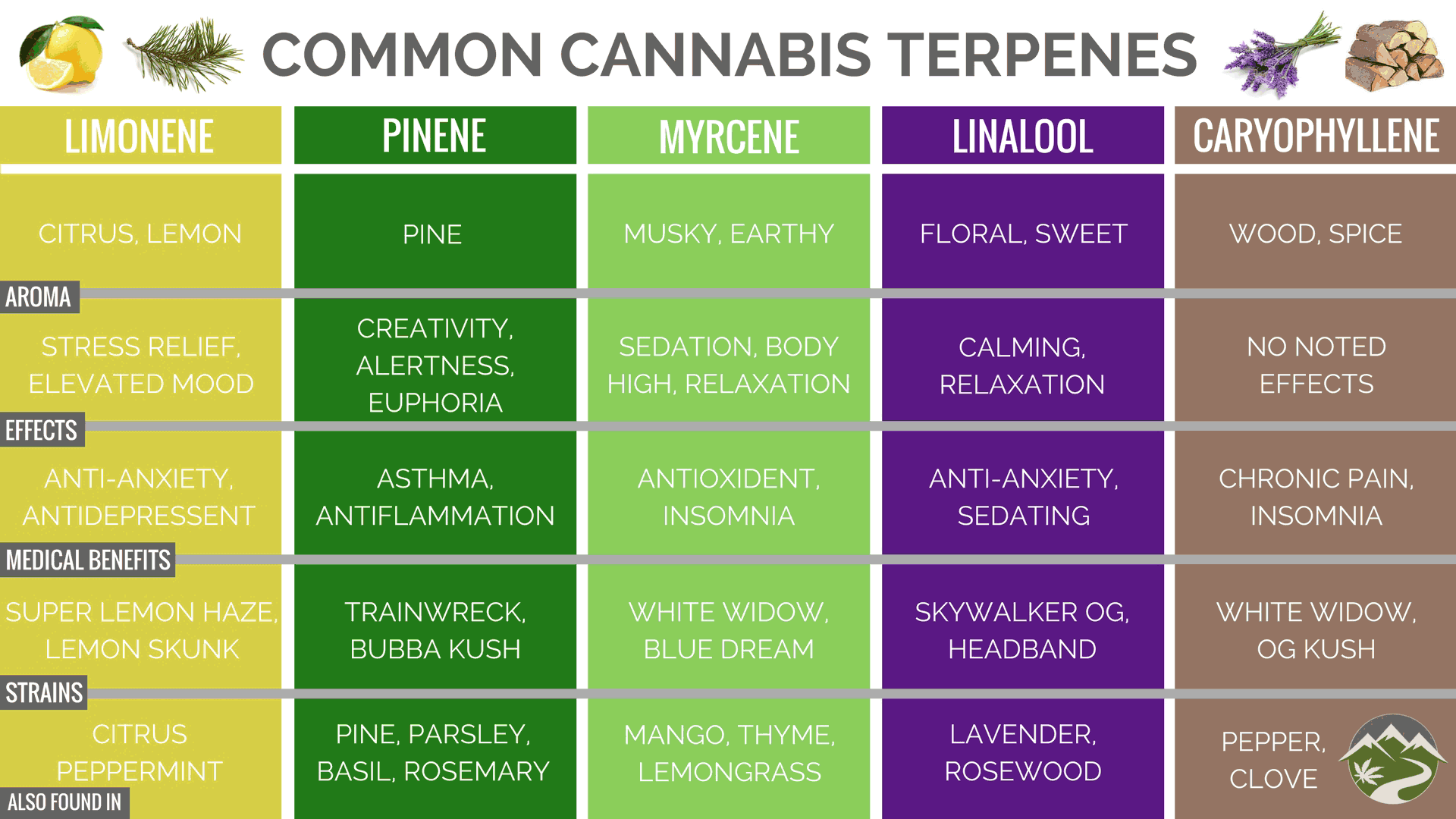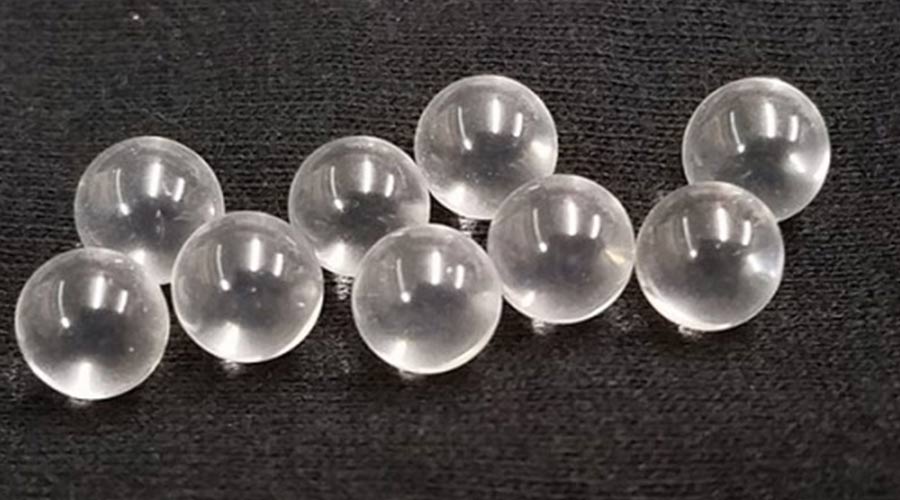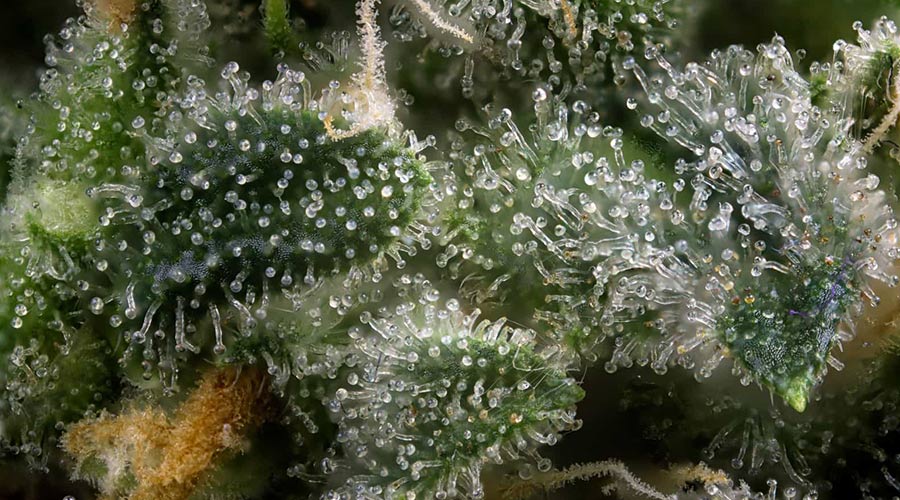When cannabis enthusiasts smell their favorite marijuana strain or concentrate, they immediately identify multiple aromatic notes. These flavors and scents are derived from a chemical compound called terpenes. Terpenes — or terps — are found throughout the plant world, including in cannabis flower buds. While these fragile chemical compounds can degrade with certain extraction processes, others can preserve a great deal of them. So, what are the terps you find in weed extracts, why are they important and how do they affect your cannabis experience?
What are terpenes?
Terpenes are organic chemical compounds found in the trichomes of cannabis flower. Trichomes are resinous, hair-like glands that contain therapeutic cannabinoids like THC, CBD, and CBN, as well as flavonoids and terpenes. While there are tens of thousands of known terpenes, cannabis produces around 100 terpenes that vary by strain.
Terpenes are used by plants as a biological mechanism to ward off predators or attract pollinators. Different growing conditions like weather, light, and humidity can affect the production of terpenes. A high concentration of trichomes on a flower strain produces unique and potent smells and flavors that dabbers can enjoy.
The difference between terpenes and terpenoids
People searching “what are terpenes,” “cannabis terpenes,” and “marijuana terpenes” may run into two terms, terpenes and terpenoids, which seem like they might mean the same thing. Terpenes and terpenoids are both secreted in trichomes and produce fragrant aromas, but terpenoids are more chemically complex.
Terpenoids undergo a transformation during the curing and drying process. Many people believe that terpenoids are precursors to terpenes, which is why the terms have been used interchangeably. Modern research is discovering that terpenes and terpenoids can have a synergistic effect on cannabinoid activity. This means that terpenes may amplify or reduce certain effects for users.
Medicinal properties of terpenes
Some terpenes are highly-regarded for their therapeutic capabilities and have been used in ancient medicine for centuries. Other terpenes are newly researched but show promising results. A number of in vitro, animal and clinical trials have shown that terpenes have a number of medical applications. Of the positive benefits, terpenes have been shown to be:
- Anti-inflammatory
- Antitumor
- Analgesic
- Antioxidant
- Anticonvulsive
- Anxiolytic
- Antidepressant
- Anticancer
- Neuroprotective
- Anti-allergic
- Antibiotic
- Anti-diabetic
- Anti-mutagenic
List of terpenes in cannabis
Terpenes can alter the effects of cannabinoids like THC and CBD by either enhancing the potent effects or dampening some negative effects. Some terpenes exhibit anti-anxiety characteristics, which can reduce the negative side effects of THC like paranoia and anxiety. Here’s a list of terpenes that are commonly found in cannabis.

Myrcene
Myrcene features a strong earthy and fruity scent that can be found in mangoes, thyme, lemongrass, and hops. Myrcene is also the most common terpene found across cannabis strains. In terms of benefits, myrcene is a known anti-inflammatory, analgesic, antibiotic, and sedative compound.
Strains containing myrcene: Bubba Kush, Remedy, Cannatonic
Pinene
Pinene is the most commonly found terpene in plants including pine needles, rosemary, dill, and basil. Pinene has been shown to curb THC-induced short-term memory loss, increase concentration, as well as open up the lung airways. Pinene has been used as an antiseptic and anti-inflammatory agent in many cultures throughout history.
Strains containing pinene: Dutch Treat, LA Confidential, Jack Herer
Limonene
Limonene’s scent is hard to miss. Aromas of lemons, oranges, and other citrus varieties appear in cannabis strains that have the limonene terpene. Because of its pleasant citrus scent, limonene is used in multiple industrial cleaning products and fragrances. Limonene has been shown to have antibacterial, antifungal, and anti-anxiety properties.
Strains containing limonene: Durban Poison, Jack the Ripper, Sour Diesel
Caryophyllene
Expect notes of pepper and spice when dealing with a high-caryophyllene marijuana strain. Found in black pepper, cloves, oregano, and cinnamon, caryophyllene has multiple therapeutic effects. Caryophyllene can help reduce symptoms of depression and anxiety, as well as having anti-inflammatory effects.
Strains containing caryophyllene: Candyland, Cookies and Cream, Death Star
Linalool
Linalool has fragrant floral and spicy scents, which can be found in coriander and lavender. Linalool has significant anti-inflammatory, anti-anxiety, and immune-boosting effects. Other studies have shown that linalool can be an aid in pain relief.
Strains containing linalool: Amnesia Haze, LA Confidential, Lavender
Humulene
Brewery aficionados will recognize the earthy and woody smell of humulene, found in hops and marijuana. Humulene can also be found in black pepper and ginseng. Research has shown that this spicy terpene is a potent anti-inflammatory, antibacterial and appetite suppressant.
Strains containing humulene: Sherbert, Girl Scout Cookies (GSC), Gelato
Ocimene
Ocimene’s sweet, citrusy and earthy aroma is common in fragrances, but can be found naturally in mangoes, bergamot, kumquats and orchids. Studies have shown that this terpene has effective anti-inflammatory and anti-oxidative properties that may help patients manage diabetes.
Strains containing ocimene: Clementine, Dutch Treat, Amnesia
Terpinolene
Terpinolene is a less common terpene found in low quantities across strains. Its eclectic aroma consists of pine, floral, herbal and citrus notes. It has potent antibacterial and antifungal properties, which is one reason it’s added to soaps and other cleaning products. Terpinolene has also shown to lower the risk of heart disease and prevent cancer cell proliferation.
Strains containing terpinolene: XJ-13, Ghost Train Haze, Jack Herer
Borneol
Borneol’s woody and slightly bitter aroma has been a mainstay in traditional Asian medicine. Research has shown that this terpene has potent anti-inflammatory and analgesic effects, especially as a topical. One study has backed up its ancient medicine roots by revealing that borneol could reduce the risk of blood clots.
Strains containing borneol: OG Kush, K13, Haze strains
Geraniol
Geraniol’s rose and fruity aroma can be found in peaches, rose oil and lemongrass, but is found in low amounts in cannabis strains. This subtle-smelling terpene has antioxidant, antifungal, antibacterial and anti-inflammatory properties. A blend of oils with geraniol has also been shown to reduce cancer cells and help patients manage the symptoms of diabetes and atherosclerosis, a condition characterized by plaque in the arteries.
Strains containing geraniol: Black Cherry Soda, Agent Orange, Harlequin
Nerolidol
Nerolidol’s woody and floral scent can be found in ginger, lavender and tea tree. Studies have shown it to be an effective antifungal agent. More recent research indicates it could have sedative effects. Research also suggests Nerolidol could reduce anxiety and cancer growth.
Strains containing nerolidol: Chemdawg, Skywalker OG, Blue Dream
Camphene
Imagine you’re in the middle of a forest. That’s what camphene smells like. It has strong earthy, woody and musky notes. One animal study found that camphene could help reduce cholesterol and triglyceride levels in rats. Camphene has also shown to reduce inflammation and pain, as well as have antifungal characteristics.
Strains containing camphene: ACDC, Banana Kush, Mendocino Purps
Terpineol
Terpineol refers to any one of a class of four monoterpenes including alpha-terpineol. It often accompanies strains with pinene, which can overpower terpineol’s subtle floral and earthy smell. Apart from its relaxing properties, terpineol has been shown to also have antibiotic, antioxidant, anti-inflammatory, anti-anxiety, anti-tumor and sedative properties.
Strains containing terpineol: White Widow, OG Kush, Jack Herer
Phellandrene
Phellandrene is a secondary and uncommon terpene that can be found in eucalyptus. Its minty, citrus and woody smell has made it a popular addition in perfumes. A limited amount of studies have shown that phellandrene exhibit anti-depressive and antihyperalgesic properties when used with limonene. Some studies have also shown it has anti-cancer and anti-inflammatory characteristics.
Strains containing phellandrene: Trainwreck, Jack Herer, Ace of Spades
Carene
Carene, also known as delta 3 carene, has a cedar, piney and citrusy aroma and can be found in basil, rosemary and bell peppers. Studies have shown that carene has anti-inflammatory properties and can improve bone growth and repair. Carene has also been shown to be a powerful memory-booster.
Strains containing carene: Super Lemon Haze, Skunk #1, Super Silver Haze
Pulegone
Pulegone’s strong peppermint aroma makes it a popular flavoring and cosmetic additive and naturally found in spearmint, peppermint and catnip. Pulegone has particularly positive effects on the mind. It’s been shown to have anti-anxiety and psychostimulant effects on animals. It’s been used as a part of pennyroyal oil to treat indigestion, headaches, colds and menstrual pain.
Strains containing pulegone: OG Kush, Pink Kush, Bubblegum
Sabinene
Sabinene, a secondary terpene, has a potent spicy and oaky aroma that is derived from the Norway spruce and holm oak. Sabinene can also be found in black pepper, nutmeg, carrot and tea tree, albeit in small amounts. In terms of therapeutic effects, sabinene has been shown to have antioxidant and antibacterial characteristics.
Strains containing sabinene: Super Silver Haze, Arjan’s Ultra Haze #1
Flavonoids and terpenes
Unlike terpenes and terpenoids, flavonoids give plants like fruit and vegetables their vibrant colors. In cannabis flower, flavonoids produce an array of colors including red, blue, purple, and more. Of the over 6,000 different types of flavonoids, 20 of them have been found in cannabis. Many of these flavonoids have been known to have antioxidant, antibiotic, and anti-inflammatory characteristics. More research needs to be done to determine their specific interaction with cannabinoids and terpenes in the human body.
The entourage effect
Since the first clinical studies were performed, researchers have known about interactions between terpenes and cannabinoids. For example, some terpenes can enable more cannabinoids to be absorbed into the body by lowering the blood-to-brain barrier.
Because terpenes have medicinal applications, the entourage effect is the combination of chemical compounds working together to create effects unique to each strain. Although extraction processes (such as BHO and CO² extraction) and combustion can degrade certain terpenes, scientific research can help growers produce strains that can aid with different medical conditions.
How to maximize terpenes in your dabs
Whether you’re dabbing or smoking, it’s important to consider the different boiling points of terpenes and cannabinoids. Terpenes start to degrade at different high temperatures, and temperature controls on a vaporizer or eNail can help you to activate the desired terpenes in a cannabis strain. For dabbing, nails made of quartz or ceramic can be great heat conductors without imparting any flavor to the original extract.

Terp pearls swirl round your banger to allow you to enjoy low-temp, terpene-rich dabs.
High-terpene full-spectrum extracts (HTFSE) may be a mouthful of an acronym, but provide more than enough terpenes for an out-of-this-world flavor. Terp sugar, also referred to as terp sauce, is a mixture of THCa crystals and cannabis-derived terpenes. Terp sauce is a type of HTFSE that has THCa levels 90% and above and up to 20% terpenes. To get the most out of terpenes when dabbing, use terp pearls made of high-quality quartz paired with a directional airflow carb cap to evenly heat bangers and get a smoother and more flavorful draw.
With so many potential benefits, terpenes are one of the most sought-after chemical compounds found in cannabis. Terpenes can be found in different concentrations across many cannabis strains and extracts. Some extracts may contain fewer terpenes than others. While terpenes exhibit many potential health benefits, there is still more to be uncovered in creating strains that target certain disorders.



I buy terpenes for carts MI and limonene is my favorite. It is always on top of the list when terpenes are discussed. Thank you for this guide.